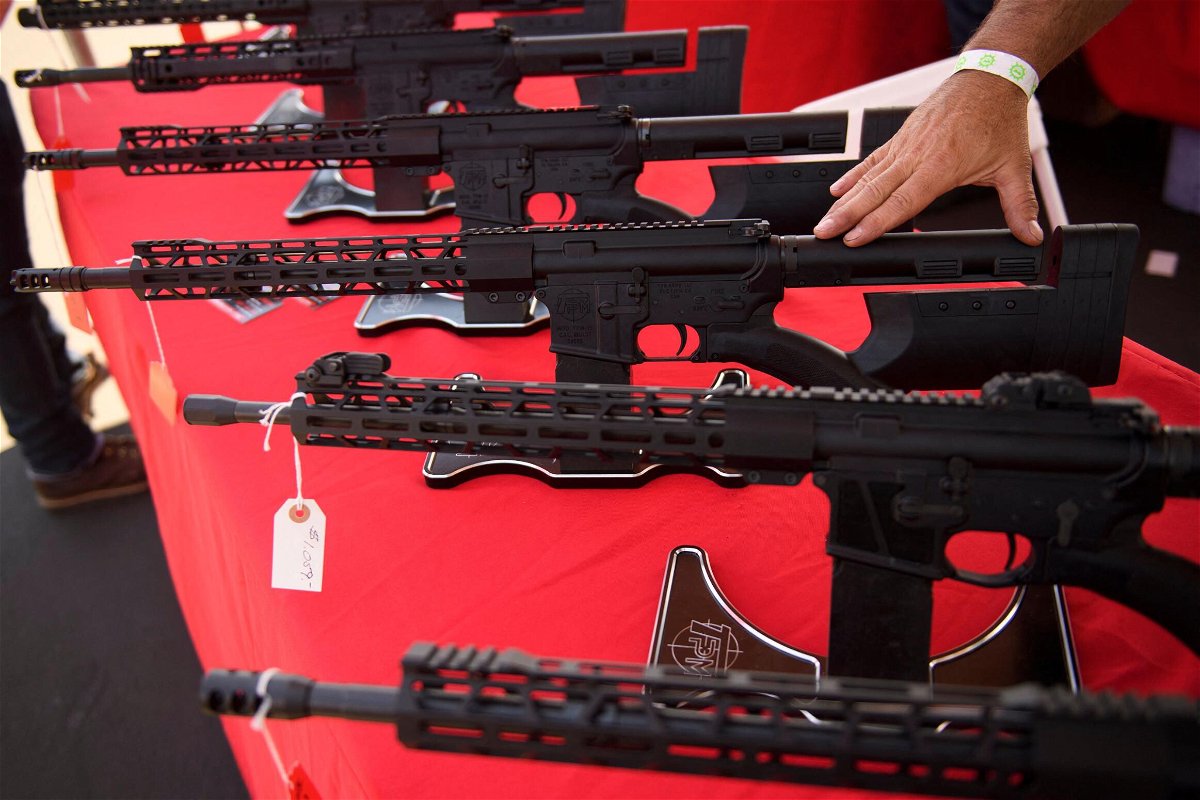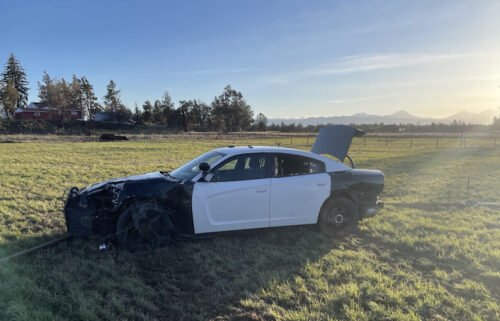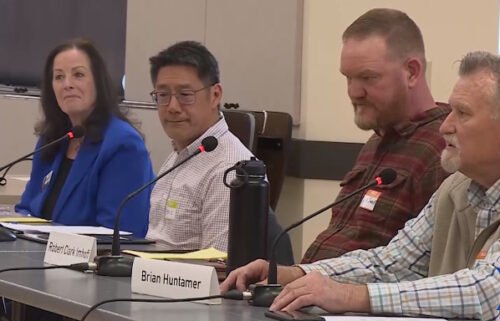Dr. Sanjay Gupta: The damage to the human body caused by firearms

Dr. Sanjay Gupta on the damage to the human body caused by firearms.
By Dr. Sanjay Gupta, CNN Chief Medical Correspondent
One of the most memorable lectures during my first year of medical school at the University of Michigan was delivered by Dr. Julian “Buz” Hoff. He was the chair of neurosurgery and a master at teaching the natural history of brain diseases. We learned about brain tumors, vascular diseases and trauma.
Hoff had a way of explaining things that made them really stick, and that was particularly clear in his lecture called “GSW.” Anyone who works in a hospital probably knows that the acronym GSW stands for “gunshot wound,” and the way Hoff wanted us to learn the topic was for us see the impact firsthand.
So on the last day of his class, we went to an outdoor gun range in Ann Arbor for our GSW lecture. There were handguns there, as well as rifles. In the distance, I saw several watermelons on top of old barrels that would serve as targets. After putting in his ear plugs and donning safety glasses, Hoff shot a watermelon with a handgun. I saw the bullet hit the watermelon but wasn’t confident I saw the bullet exit. The watermelon was then brought to us for inspection.
First thing to notice, he told us: There was an obvious entrance and exit “wound,” and they were around the same size. We could see the green skin folding in on itself around the entrance wound and the outward beveled tissue around the exit. After we chopped the watermelon open, he pointed out that the bullet seemed to have traveled in a fairly predictable trajectory, a linear bullet-sized line through the body of the watermelon.
Next came the same demonstration with a rifle. This time, I saw the watermelon shudder as it was struck and then immediately saw a significant amount of red tissue fly out the backside. Upon inspection, the first thing I noticed was how much bigger the exit wound was, compared with the entrance. And after opening the watermelon, the purpose of the demonstration became clear: Instead of a predictable linear track, the watermelon looked like it had been cored out and what was left was shredded. He explained that this was a phenomenon known as cavitation, which is just what it sounds like: The bullet doesn’t simply travel through the body, it creates a big cavity inside it.
The message was clear: I want you to imagine that had been a human body.
Much in the way pictures of black lungs had left an indelible impression of smoking on all medical students, Hoff had done the same with me for GSWs.
I was reflecting on that demonstration recently when I operated on a patient with a GSW to the head. It was a handgun injury, and we were able to quickly control the bleeding and relieve the pressure on the brain. The patient spent one day in the ICU for observation and was discharged a few days later. Had it been a rifle injury, there was hardly any chance he would’ve survived.
With guns front and center in the news these past couple of weeks, I wanted to share what I have learned over the years about what bullets do to the human body and the challenge it is for surgeons to repair the damage.
More damage
Nearly 30 years after my med school gun range demonstration, Dr. Ernest E. Moore, trauma surgeon and director of trauma research at the Shock Trauma Center named after him at Denver Health, is also using the watermelon example to draw a comparison between different firearms.
“I often use the analogy that the injury to the liver [with a semi-automatic rifle] would be similar to just taking a watermelon and dropping it on the cement. It’s incredible the amount of energy delivered. … By comparison, the 9 millimeter would drill a hole through the liver. So you’d have a sizable hole, but if you didn’t hit a major blood vessel, it’s a pretty tolerable injury. In fact, we in civilian trauma will often manage a 9-millimeter liver injury without an operation, whereas a patient with an assault rifle would be dead within 20 minutes if you didn’t operate,” he said.
Other human tissue in the body reacts differently. “If you struck a bone with an AR-15, like your femur in your leg, it would literally shatter into multiple fragments that would sort of serve as secondary missiles. Whereas … we’ve seen 9 millimeters that will actually drill a hole right to the femur,” he said. (An AR-15 is a lightweight semi-automatic — that is, self-loading — rifle manufactured by Colt; other gunmakers make rifles in a similar style.)
Moore also brings up cavitation as a way of visualizing what is happening in the body. He describes cavitation “as the result of a rapid expansion of the tissues surrounding the path of the bullet. … In essence, instead of a virtual drill hole with a 9 millimeter, your path of injury in tissue with an AR-15 will be 6 inches wide. And the path beyond that is even wider, but the tissue recoils back into it,” said Moore, noting that inelastic tissue — like the liver, heart and brain — are the most vulnerable to this type of energy.
A brief history of the AR-15-style weapon
Although the Department of Justice notes that 77.2% of mass shootings — which it counts as four or more deaths, excluding the shooter — involve handguns, many of the highest-profile incidents involved assault-style rifles: the 2012 Sandy Hook Elementary School shooting in Newtown, Connecticut; Orlando’s Pulse nightclub shooting in 2016; the 2017 shooting at a music festival in Las Vegas; and the 2018 Marjory Stoneman Douglas High School shooting in Parkland, Florida, just to name a few.
This kind of rifle unleashes a lot of power, said Moore, who, in addition to being a trauma surgeon since 1976 (who operated on some of the Columbine survivors), co-edited a major textbook on trauma surgery, authored more than 1,700 scientific articles and was the longtime editor of the Journal of Trauma and Acute Care Surgery.
“The capacity for tissue injury is reflected in the so-called kinetic energy. And the kinetic energy, simplistically, is the mass or weight of the bullet times the velocity squared. So the velocity — the speed of the bullet exiting the gun — is really its primary effectiveness,” he said.
Moore said a 9-millimeter handgun has a muzzle energy — the kinetic energy of a bullet as it leaves the gun’s muzzle — of roughly 400 foot-pounds of force. For a rifle like the AR-15, that number is 1,300. “So you have a huge increase in the amount of energy imparted from the gun,” he explained.
He said the size of the bullet has less to do with the damage it causes.
“I think there are some misconceptions with … rifles. A lot of people say, ‘Oh, they’re big bullets.’ Actually, they’re small bullets — interestingly, they’re even smaller than many handguns. So the actual bullet that’s discharged from an AR-15, for example, is a half the size of the bullet from a 9 millimeter. The difference is the … velocity,” he said.
And, if that rifle is a semi-automatic weapon, the weapon can be fired repeatedly, without manually reloading, simply by pulling the trigger. In Uvalde, hundreds of rounds were fired into classrooms in the first four minutes, according to Texas Department of Public Safety Director Steven McCraw.
Moore, who grew up in a hunting family, owns firearms and is an avid hunter, has been outspoken in his opposition to civilians owning AR-15-style semi-automatic weapons and does not own one himself. “The rifle that our military uses to fight our enemies is the same rifle that we allow civilians access to and can create these mass shootings,” he said.
An Emmett Till moment
During my neurosurgery training and the first several years of my career, I didn’t encounter these sorts of injuries. That’s because between 1994 and 2004, certain semi-automatic firearms were banned. In fact, it was in 2003, while I was covering the war in Iraq, that I first saw the damage these weapons cause on the human body, not just a watermelon.
I was embedded with the Devil Docs, the Navy medical team that provides front-line medical care for the Marines. There are things that my cameraman Mark Biello and I saw on the battlefield that we still have a hard time talking about. They are still hard to even write about. Limbs blown clean off the body and wounds so horrific, I thought for sure they must’ve been caused by a bomb or IED.
I never imagined that just a couple of years later, I would see the same sorts of injuries in US cities, including my own, Atlanta. Those are the days when I come home from the hospital simply unable to talk, let alone describe what I had just witnessed.
Still, as you may have read after the tragedy in Uvalde, some folks are now raising the issue about whether we should have an “Emmett Till moment.”
Emmett Till was a 14-year-old Black teen who was abducted and violently murdered in 1955 by white racists in Mississippi after a white woman accused him of whistling at her. Till’s mother took the unusual step of holding an open-casket funeral and allowing a photographer from Jet magazine to photograph her son’s disfigured, unrecognizable face to show the country the result of racial violence. Many consider that moment a turning point in the country’s collective support for the civil rights movement.
Many of my colleagues have urged me to further describe the horrific injuries I have seen over the last nearly 20 years as a neurotrauma surgeon.
The truth is, I’m not sure America is ready to see that. More important, it isn’t a decision anybody can make unless it’s their loss and their story to tell — like Emmett Till’s mother.
Public health emergency
Louis Klarevas, research professor at Columbia University and author of the 2016 book “Rampage Nation,” credits the 10-year federal assault weapons ban between 1994 and 2004 with significantly reducing the number of mass shooting incidents and deaths (which he defined as injuring or killing six or more people) before rebounding to even higher levels after the ban expired. In 2020, there were an estimated 20 million AR-15 style weapons in circulation in the United States, according to the National Shooting Sports Foundation.
Between 1990 and 1999, during the decade in which I traveled to that gun range with Hoff, mass shootings claimed an average of 21 lives per year; from 2012 to 2021, that average had gone up to 51, according to the Violence Project. It defines a mass shooting as four or more people in a public place being killed with firearms, without any underlying criminal activity, excluding the shooter. (CNN defines mass shootings as those in which four or more people other than the shooter are injured or killed by gunfire during one event.)
Federal data on the overall impact of gun violence is lacking. Even obtaining the basic numbers can be a challenge, as I learned writing this article. While the US Centers for Disease Control and Prevention has dashboards for Covid-19 and even monkeypox, gun violence is still an enigma for the public health community. That’s in large part due to the Dickey amendment, which, in 1996, made it challenging and potentially financially punitive for the CDC to conduct or fund research on gun violence if it were to be used in any way to promote gun control.
Even today, it is organizations like the Gun Violence Archive — an independent data collection and research group that collects information on gun violence from more than 7,500 sources daily — and not the CDC that provide some of the most up-to-date statistics on gun violence and deaths on a daily basis.
The rise of gun violence is something Dr. Bellal Joseph has seen firsthand. He is the chief of the Division of Trauma, Surgical Critical Care, Burns, and Acute Care Surgery at the Banner University Medical Center at the University of Arizona and a professor in the Department of Surgery in the University of Arizona College of Medicine – Tucson.
“I can tell you from our own data, but also from a national perspective, there’s no doubt that … every trauma center in the country is seeing unprecedented numbers of trauma,” he said referring to “violent trauma: more shootings, more victims.”
“Mass shootings are more prevalent at trauma centers than people actually think,” said Joseph. “Oftentimes, it takes a high [profile] school shooting to activate the media, but it actually happens a lot more than we think, unfortunately.”
Joseph, who back in 2011 helped treat nine of the survivors of the mass shooting that targeted US Rep. Gabrielle Giffords, like every other surgeon we spoke to, wanted to emphasize that injuries from AR-15 style semi-automatic firearms are not like other injuries.
“When you see … victims from AR-type assaults, what you’re seeing is a violent crime against others,” he said.
Stalemate in the face of mounting violence
According to an analysis by the Institute for Health Metrics and Evaluation, the US ranks first in firearm homicides per capita among high-income countries of more than 10 million — that’s an age-adjusted rate 13 times greater than France’s and 23 times greater than Australia’s. And, according to the CDC, the most recent data shows that firearms were the leading cause of death in children and adolescents up to age 19 in 2020, claiming more than 4,300 lives. That was a nearly 30% increase from 2019.
The deaths are only a small fraction of those affected. The lives of people who are injured, the victims’ families, friends and the community at large are forever ripped apart.
And if you need a reason to look beyond the human cost of gun violence, there is also the cost to society: According to a February 2021 report by Everytown Research and Policy, it comes out to an estimated $280 billion a year, which includes medical, criminal justice and other expenses.
The American College of Surgeons, the professional organization that represents the people who see this type of injury all too often, has been calling for tighter control of weapons and more common-sense rules. In 2018, the ACS’s Firearms Strategy Task Force released 13 recommendations that includes items like regulating heavy-duty firearms, more safety training, and increasing recognition of mental health issues. But the bipartisan legislation currently being considered in the House of Representatives falls short of these recommendations.
“There has to be some vetting, training,” said Joseph, especially when it comes to weapons like AR-15-style semi-automatic rifles. He noted that to be allowed to drive, a person needs many hours of coaching and practice in order to pass an exam and get a license — “no one is getting into a car and just driving.”
As for objections that “the government can’t tell us what to do,” Moore says, yes, citizens have rights, but they are not limitless.
“We don’t drive tanks through the street. We don’t throw a grenade into the parks. … We need to have some rational thinking,” he said.
The same sort of rational thinking Hoff impressed on us so many years ago on a gun range in Ann Arbor, Michigan.
The-CNN-Wire
™ & © 2022 Cable News Network, Inc., a WarnerMedia Company. All rights reserved.
CNN’s Andrea Kane contributed to this report.



